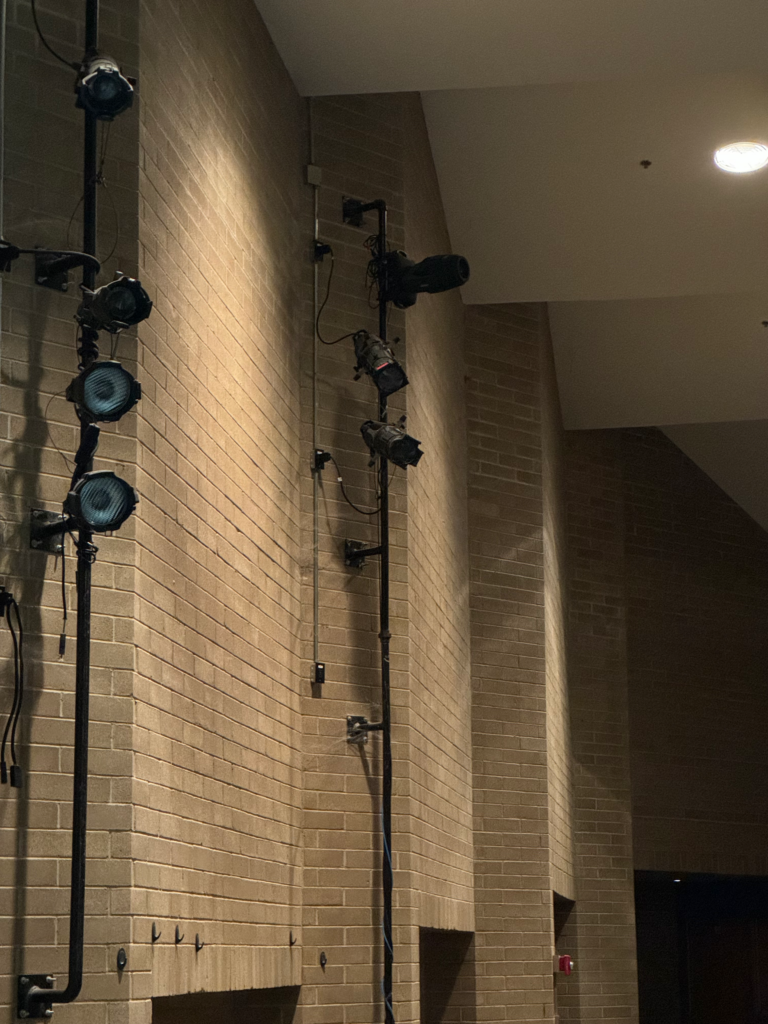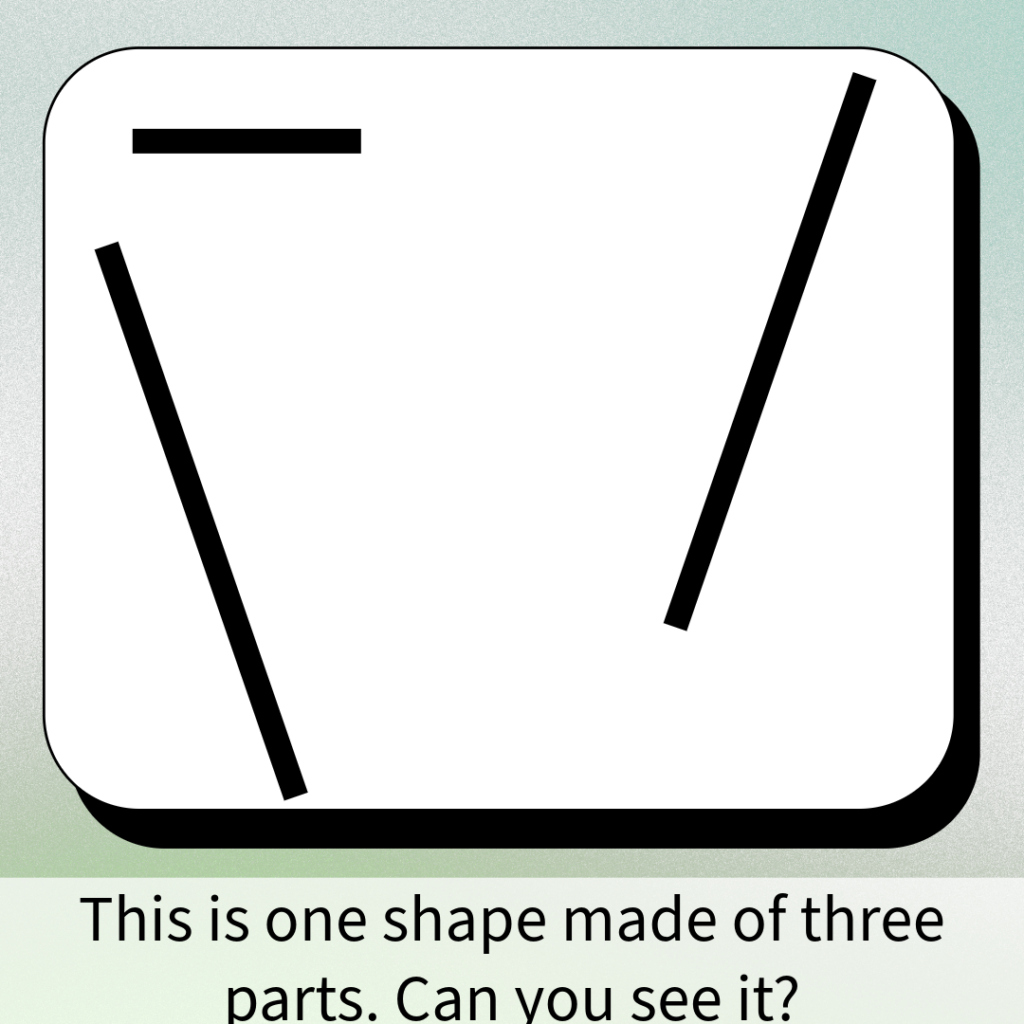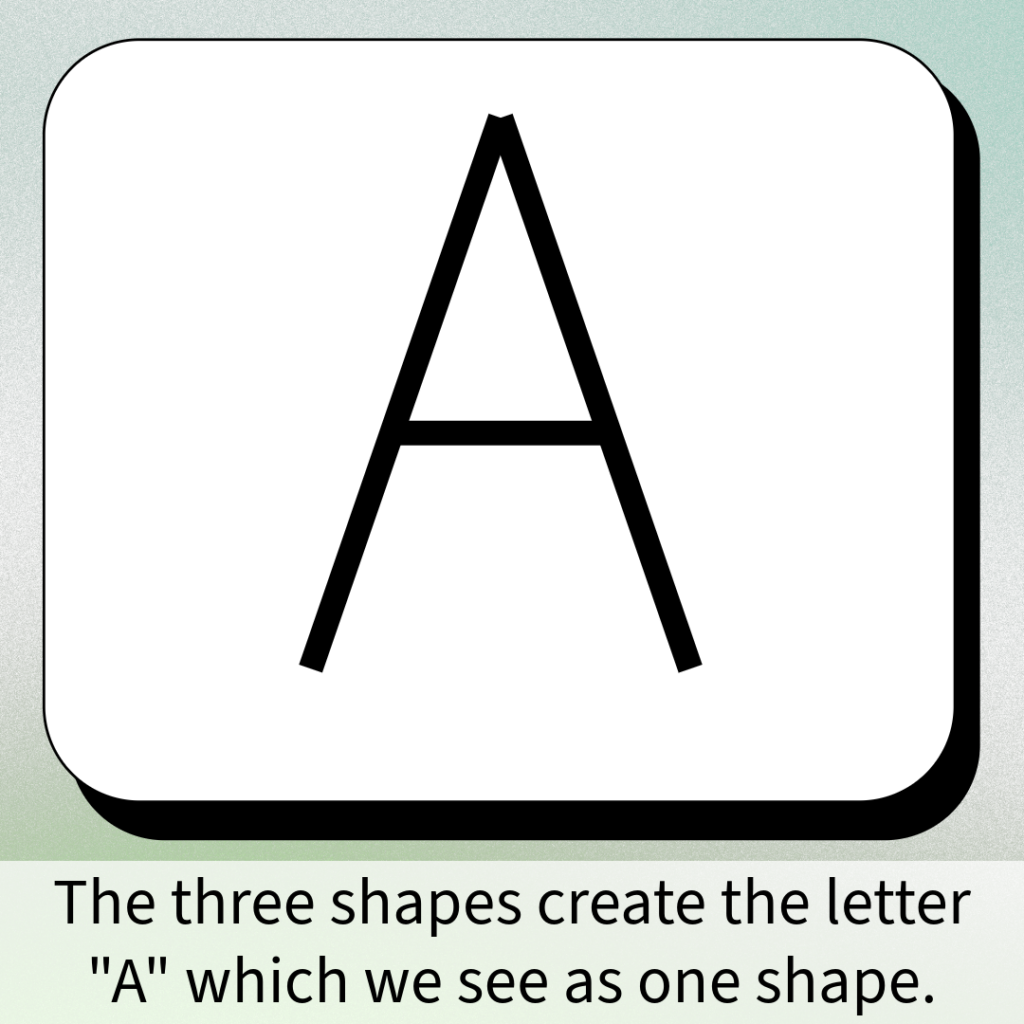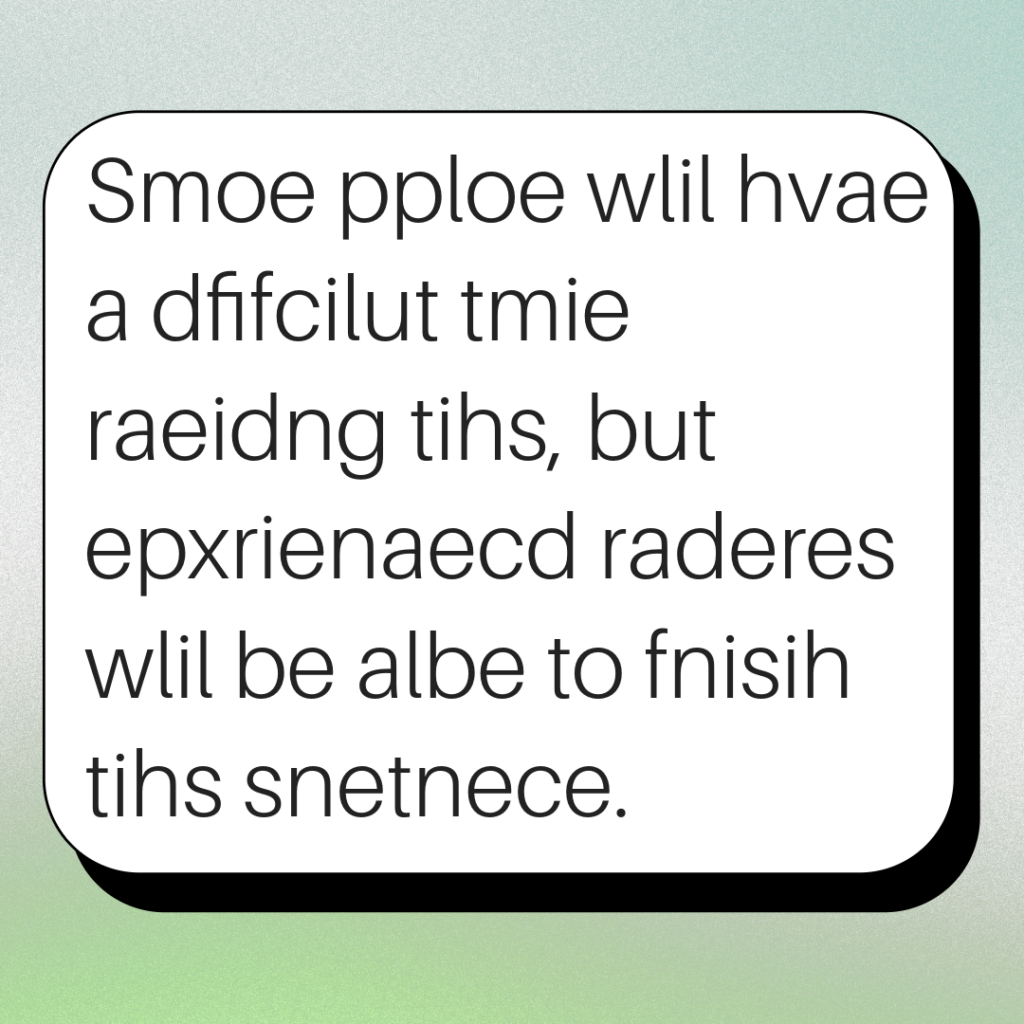
NAU’s Erika Konrad and student Brad Winchester recently shared how his experience in Gestalt theory can influence technical writing and editing, and its commonalities with technical theater.
I recently sat down with Brad Winchester, who is about to graduate from our Professional Writing master’s degree program, online through Northern Arizona University.
In addition to being our student, Brad teaches high school psychology and theater. I asked him if he would answer my questions about the connections between psychology, theater, and technical writing.
Q1: Brad, could you tell us a little about Gestalt psychology?
Gestalt psychology was pioneered over 100 years ago as a way to explain perceptual experience. It emphasizes that the whole of something is greater than the sum of its parts. Here is an example:
According to Gestalt theory our brains use many different perceptual strategies. We see one such strategy during the Christmas season when houses are decorated with “motion” lights.
Motion lights give the illusion that the lights are somehow moving along the wire. In reality, they are just blinking off and on in sequence. To make sense of it, our brain tells us the lights are in motion. This is known as the “phi phenomenon.”
Gestalt psychology provides an important baseline, even if cognitive neuroscience and neurobiology better explain the breadth of sensation and perception. An 2012 article published in Psychological Bulletin gives a historical and conceptual overview of Gestalt psychology, including its current use as a therapeutic technique.
The most important element is holism–Gestalt psychology is all about pieces making a whole to create understanding and give meaning.
Q2: In particular, could you tell us how Gestalt psychology relates to why technical editors miss things when we edit our own work?
Gestalt principles related to language processing help us organize language quickly. When we read, we expect things to be a certain way. Readers know that the word “word” looks a certain way. We don’t have to read each letter to understand it because we understand the shape of the word as long as it is written in sentence-case.
Consider the following group of numbers: 5-55616-6-4-00. It could also be written like this: 5556)1(64-00. If you look at both of them long enough, you can possibly decipher that this is a phone number. (555) 616-6400. We know what those shapes represent and expect them in a certain order so our brains can more readily assign them meaning. The individual pieces hold no meaning, but the individual pieces create a wholistic view of what we understand to be a phone number.
If technical writers write in the negative, it can create confusion for the reader. In seventh-grade Science class, Mrs. King yelled, “Stop running!” after seeing me sprint down a hallway. Instead, I broke into a skip and moved just as fast. She told me what not to do instead of what to do. The directions left room for interpretation, and in my case, probably made things worse. Telling the reader what not to do halts the action entirely and pushes it to the negative.
Positive phrasing tells us what to do. Mrs. King Should have told me to walk. It’s why I instruct my students as well as my own child to walk when they sprint through hallways or the house. Telling the reader what to do pushes the action forward. In other words, it pushes it to the positive.
I saw the following image at my local gym.

Technical writers know that this violates a few rules—rules based on Gestalt psychology. First, the instructions are written in all-caps, rather than sentence-case. Our brains anticipate words in sentence-case based on prior experience. We problem-solve quickly using availability heuristics, a type of cognitive bias, that is quick but sometimes incorrect.
Second, the instructions tell us what “not” to do.
When I first read the instructions, I missed the “NOT” in the center because I expected the instructions to tell me what to do or who should use the device. Instead, it tells us who should not use it.
Gestalt principles work to help us understand the world, but when our expectations are subverted by bad technical writing, they hurt us. It is also part of the reason why we can sometimes miss mistakes in our writing or our design when editing because we make sense of the whole by organizing the parts, even when a part might be missing or out of order. Our experiences are partially dictated by our expectations and prior knowledge. If we expect to be told what to do, we might read a sentence as a positive phrase. In the sunlamp example, the phrasing subverts those expectations and might lead to a crispy minor in a tanning bed.
This example illustrates the importance of our anticipation and expectations for words and phrases. Even though most of the letters are in the incorrect places, the first and last letters help us read them as words. The individual parts give the words meaning. If a word is misspelled and we are in a hurry, our brains are going to read it based on expectations. We use grouping to understand the meaning of shapes, people, objects, and even words.
Another common example comes form my high school English students’ work. It is a simple mistake. In fact, you may have read over it in the first sentence of this paragraph. The words “form” and “from” are both spelled correctly, and older spell-checking tools didn’t catch the error. Even after peer review, the mistake remained. The context of this paragraph and the first sentence makes the reader anticipate the word “from.”
Gestalt principles don’t explain the complexities of language very well. But from a purely visual standpoint, we know what individual words look like. There are words we expect in certain orders, phrases, or contexts like the example above. The word itself gives meaning to the whole sentence. Finally, consider writing for a website. Imagine if the menu, links to internal pages, headings, and anything we normally find on a website were located at the bottom of the page. If I printed it out for you to read, you might not realize that it is a webpage. Those small elements that we look for individually will collectively give us meaning. It’s a webpage.
Q3: Brad, you are a theater teacher as well as a psychology teacher. Could you tell us how building theater sets relates to technical writing?
Technical theater is much like technical writing. Actors run the show, but the crew makes it run. Like technical theater, technical writing is best when it goes unnoticed.
In a theatrical production, the technical theater crew must run the lights, the sound, and any other production elements backstage. If the crew is needed on stage, they are hidden in plain sight and are in costume.
At the end of the night, the actors often acknowledge the light booth to acknowledge all of the technical crew during bows. Professional companies never have the crew on stage for bows. It destroys the illusion of the show. The technical components of theater are supposed to go unnoticed to help enhance the production.
Technical writing is the same. It serves a purpose. Technical writing gives direction, clearly communicates information, and makes strategic use of graphics and imaging. If done correctly, the reader will get what they need without thinking about how it was delivered.
Replace the jargon for more effective communication
The theater is loaded with jargon. For example, our movers, LEDs, and intelligent lights daisy-chain with DMX cables, but our cyc lights and fresnels run off Edison connectors.
Understanding the correct terminology is essential when communicating effectively, and so is knowing when to hold back from using too much jargon. In the theater, some terminology is colloquial.
For example, we use “the pipes” to describe the mounted booms, the metal poles used for mounting theatrical lighting, above the seats. Readers might not understand the booms placed house right and house left but explaining that they are the poles affixed to the brick walls with lights mounted on them might be clearer, especially with a visual like the one from our school’s theater.

Like technical writing, theater communication depends upon context. Personnel in the theater might understand theatrical terminology, but new students might not. So, if we ask new students to get an impact driver instead of a drill, two items that look very similar, they will likely not know the difference. A drill is a common enough item that most students will have an understanding of what the tool looks like. If we ask students to get a drill, they will likely come out with an impact driver or a drill. They have a conceptual understanding, and they have context. Without it, the directions are meaningless.
Summary
Gestalt theory helps explain how our minds perceive the world by understanding that small components make up larger, more complex objects and systems. For example, we see the letter “A” rather than the three separate lines which create the letter “A.”
We understand words based on their shapes in sentence case because of our experience as readers. In most contexts, using all caps causes all words to become the same shape making it difficult for the reader because it is not a part of their expectations. It forces the reader to spend more time on each letter to comprehend what is read. Technical writers can use these principles to communicate with their readers effectively. Using all caps can be helpful in situations like warnings in technical manuals because all caps work in that context. Technical writers can use grouping and chunking to organize information for the reader. Considering the reader’s probable experience and the context in which the technical information will be used helps the technical writer create a whole, understandable product out of its many pieces.


